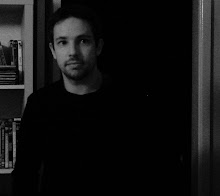 "Ghost Box came into being as an independent record label. We needed a way to put out our music and it seemed the logical way to do it. We shared musical obsessions (Radiophonic Workshop, early electronic music, library records, weird folk, soundtracks, etc.), but also we are both into HP Lovecraft and Arthur Machen, weird tales, cosmic horror, British TV sci-fi and the strangeness of a certain part of postwar Britain. We wanted the label to be dense, full of allusions and references... an audio-visual identity. Lately it seems to have taken on a life of its own, through the things that have been written about it. It's as if it's creating its own mythology, willing us to move into into other areas - film, illustrated books, strange events."
"Ghost Box came into being as an independent record label. We needed a way to put out our music and it seemed the logical way to do it. We shared musical obsessions (Radiophonic Workshop, early electronic music, library records, weird folk, soundtracks, etc.), but also we are both into HP Lovecraft and Arthur Machen, weird tales, cosmic horror, British TV sci-fi and the strangeness of a certain part of postwar Britain. We wanted the label to be dense, full of allusions and references... an audio-visual identity. Lately it seems to have taken on a life of its own, through the things that have been written about it. It's as if it's creating its own mythology, willing us to move into into other areas - film, illustrated books, strange events."- Julian House, interviewed in Cover Art By: New Music Graphics
 It's slightly odd for me, reading these lists of influences (House also cites Polish posters and Czech Surrealism in this BBC article). It's almost precisely the stuff I've been discovering in recent years, in some cases unaware that it was being 'revived' - see also: Broadcast, Mordant Music, The Caretaker, Trunk Records, Second Run reissues of Czech new wave films etc etc. Is it just that these are some of of the few areas of 20th century art yet to be entirely plundered, or is there more to it than that?
It's slightly odd for me, reading these lists of influences (House also cites Polish posters and Czech Surrealism in this BBC article). It's almost precisely the stuff I've been discovering in recent years, in some cases unaware that it was being 'revived' - see also: Broadcast, Mordant Music, The Caretaker, Trunk Records, Second Run reissues of Czech new wave films etc etc. Is it just that these are some of of the few areas of 20th century art yet to be entirely plundered, or is there more to it than that? The overused h-word is unavoidable here. As has been pointed out, this is not something you can codify or turn into a genre. But there's something going on at the moment, a nostalgia for a (possibly imaginary) pre-market-research-standardised culture and a longing for uncharted territory - something a bit weird and, er, haunting.
The overused h-word is unavoidable here. As has been pointed out, this is not something you can codify or turn into a genre. But there's something going on at the moment, a nostalgia for a (possibly imaginary) pre-market-research-standardised culture and a longing for uncharted territory - something a bit weird and, er, haunting. ***
Thinking about all this sent me back to Ian Penman's article on Tricky in Vital Signs, which in turn led me to re-read his brilliant hatchet job on Tarantino from 1995 (tenuous link but bear with me):
"So, you see - unreal people in real situations - that's the reason that despite their spitty hissy tom-cat woozy-Uzi male-violence malevolence these are real 'feel-good' movies. (Or only half-real: half-real and half-reel as it were.) A real feel-good deal for People Like Us. People who can spot pop-trash references the way people used to spot wildflowers and lapwings. People too sassy smart to get a feel-good fillip out of Forrest Gump but yet too squishy-brained to make the effort to get haunted by some Kieslowski meditation on the fracturing of late twentieth-century identity. Because these (last) days People Like Us want our fractured identities signed sealed and delivered in a fast-food pop-cult package - you see, we don't want to be haunted; we don't want to wake up later in the night with strange visions shifting around the bare room of our conscience, or tears of trepidation asking to be cried; we don't want to ask too closely about the failure of love in all our lives and the fever of disappointment that stalks us daily. No, we're far safer in San Quentin, the adult Theme Park where everything is just a mild wild half-teen half-toon update of old nasty noir references; where pasty-faced men in black suits are our version of giant Mickeys and Goofys who pat us on our nodding heads on the way to the exit as they say: It's OK little children, go home safe in your fan-fan-fantasies..."





























.jpg)


















No comments:
Post a Comment